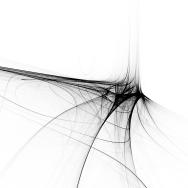The University of Chicago has announced the winners of its 2025 “Science as Art” contest, which highlights images of innovative scientific research from the UChicago community.
The contest drew dozens of entries from undergraduates, graduate students, staff, alumni, postdoctoral researchers and faculty members, showcasing everything from telescopes to trilobites. Together, these images display the pursuit of knowledge in a new light, underscoring the beauty of intellectual exploration.
The grand-prize winner is: “Anemometer in the High Arctic” by graduate student Jui-Chun Freya Chen (shown above).
Chen wrote: “In the summer of 2024, to witness firsthand the changing conditions of the High Arctic, we deployed a series of scientific instruments on the Milne Ice Shelf, a semi-floating expanse of ice in the Qikiqtaaluk Region of Nunavut, Canada. Among them, an anemometer stood as a silent sentinel, measuring the winds that swept across this fragile landscape. A single photograph captured the moment—an image that serves as both a record of our efforts and a reminder of the immense forces at play.
Standing upon the vast ice, dwarfed by the sheer scale of nature, we were reminded of our own insignificance in the face of Earth’s shifting climate. And yet, though our presence may be small, our work carries weight. Each measurement, and each observation, is a step toward understanding the profound changes unfolding in this remote region.
In the grand scheme of nature, our efforts may seem minuscule, but they are essential in the ongoing pursuit of knowledge and the global fight against climate change.”
Second place was awarded to “Rhapsody in Tin” by graduate student Will Burke.
Burke is a scientist developing new quantum technologies. In particular, he works on “qubits”—the building blocks of quantum computers, which store quantum information. To make a good qubit, you must isolate it from outside influence; one way to do this is by trapping it inside crystals, shown here.
Burke wrote: “In this microscope image, you can see it forms these kaleidoscopic, almost snowflake-like patterns.”
The audience favorite, chosen by a March Madness-style bracket on UChicago’s social media channels, is “Cellular Vision” by graduate student Krystyna Tesak.
Tesak is a scientist studying cancer cells and how they metastasize. This shows six different views of the same cancer cell, taken with a high-powered microscope; the different colors highlight the various structures that make up the cell.
“This detailed visualization is part of an investigation into how cytoskeletal properties drive the invasiveness of cancer cells,” Tesak wrote. “By delving into these cellular landscapes, we aim to uncover crucial insights into the mechanisms behind cancer metastasis.”
Two entries also received honorable mentions:
"Arabidopsis Roots Floating in Zero Gravity" by research analyst Laura Guillard-Gerard
Guillard-Gerard is growing these seedlings in experiments to understand how leaves and roots regulate their genes under different hormonal conditions. She created custom 3-D printed parts to grow them hydroponically in the lab.
"My day one" by research specialist Chris Anto and graduate student Emily Hendricks
Anto and Hendricks wrote: “Two sibling zebrafish embryos, approximately one day old, with their hearts glowing due to fluorescence.”
In their research, Anto and Hendricks are seeking to understand the intricate processes by which organisms grow complex organ shapes, like hearts and guts.
Flip through several more entries in the gallery below, or view the full, stunning set of entries at the Flickr gallery.
Winners and entries will be displayed around campus in the coming year.

